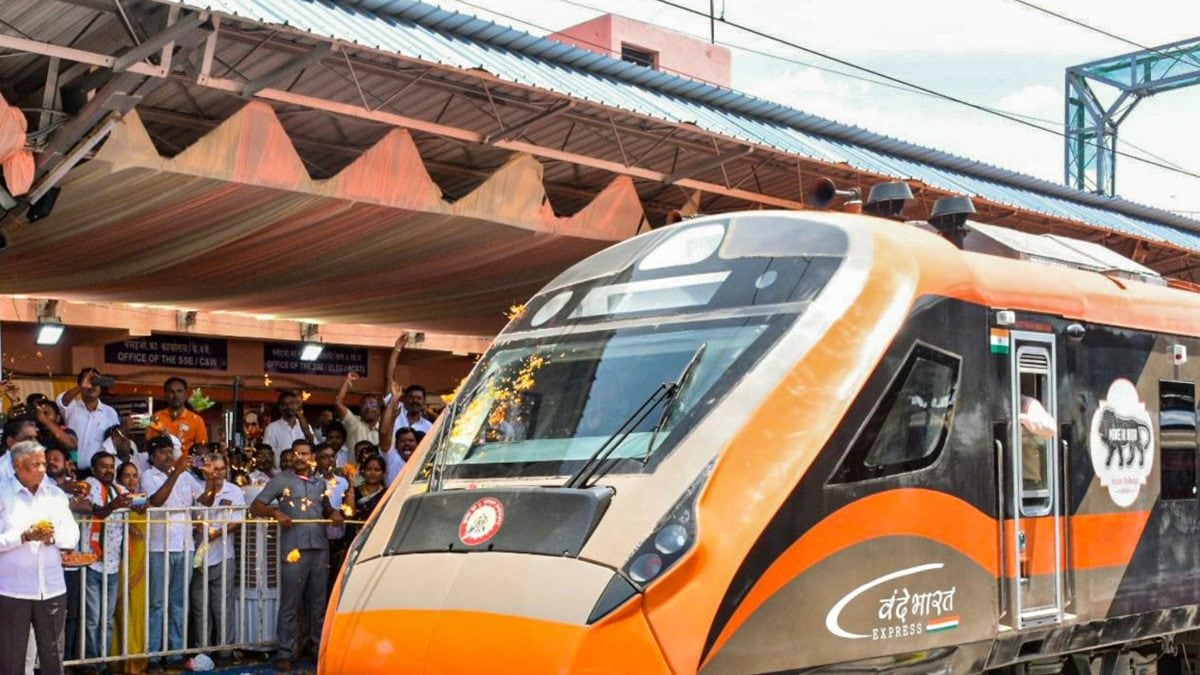 |
|
The Indian Railways' ambitious Vande Bharat sleeper train project has achieved a significant milestone. During recent trials conducted over a 40-kilometer stretch in Rajasthan's Kota division, the train successfully reached a peak speed of 180 kilometers per hour. This achievement, showcased in a video released by Union Railways Minister Ashwini Vaishnaw on the X platform (formerly Twitter), demonstrates the progress made in developing a high-speed, comfortable sleeper train for long-distance travel within India. The video, showing a nearly full glass of water remaining stable inside the moving train, highlights the smoothness and stability achieved at this speed, suggesting a significant advancement in railway technology and engineering within the country.
These trials, which are ongoing and scheduled to continue until the end of January 2025, are crucial for the final certification and deployment of the Vande Bharat sleeper train. The successful 180 kmph run between Kota and Laban in Bundi district on January 2nd, 2025, represents a key step in the rigorous testing process. Before regular passenger service can commence, the train must undergo a final evaluation by the Railway Safety Commissioner to ensure that it meets all safety standards and regulations. Only upon successful completion of these safety checks will the train be certified for operation on the national rail network, marking a significant advancement in India's railway infrastructure and passenger travel experience.
The Vande Bharat sleeper train is not merely an upgrade in speed; it represents a significant leap forward in passenger comfort and convenience. The train boasts an array of features designed to enhance the passenger experience, including automatic doors for safety and ease of access, ultra-comfortable berths for a restful journey, onboard WiFi connectivity for seamless communication, and an aircraft-like design aesthetic that creates a more modern and refined travel atmosphere. These features, combined with the increased speed, aim to elevate the long-distance train journey from a sometimes arduous experience into a comfortable and efficient mode of transportation. The potential impact on long-distance travel in India is substantial, promising to significantly reduce travel times and improve the overall journey for passengers.
The successful trials of the Vande Bharat sleeper train have significant implications for India's railway system and its overall economic development. High-speed rail travel is not only convenient for passengers but also boosts economic productivity by reducing travel time for business and leisure travelers. The successful introduction of this advanced sleeper train will also showcase India's growing expertise in railway technology and engineering on the global stage. The project underscores a commitment to modernization and improvement in public transportation, aiming to provide citizens with a safer, faster, and more comfortable travel experience. Further developments and rollout plans are eagerly anticipated, promising a significant upgrade in India's long-distance rail travel capabilities. The successful trials lay the groundwork for a transformative change in the nation's railway landscape, potentially influencing future railway projects across the country and impacting the wider travel industry.
The long-term impact of this development extends beyond immediate convenience. By improving the efficiency and comfort of long-distance travel, the Vande Bharat sleeper train has the potential to positively impact tourism, trade, and overall economic growth. The reduced travel time allows for more productive use of individuals’ time, benefiting both business professionals and leisure travelers. The enhanced comfort features contribute to a more pleasant and relaxing journey, encouraging more people to opt for train travel as opposed to other, potentially less convenient or more costly options. This positive shift in travel preferences can stimulate economic activity along train routes and contribute to the broader development of regions served by this advanced railway system. Further, the successful completion of this project will undoubtedly inspire further investments in high-speed rail technology and infrastructure within India.
Source: Vande Bharat Sleeper Train Reaches Peak Speed Of 180 kmph During Trial
